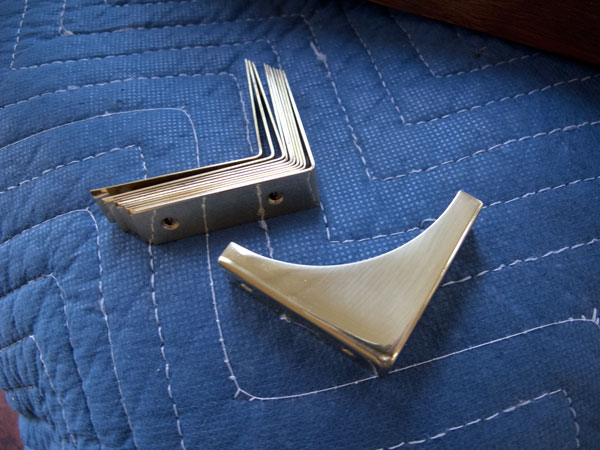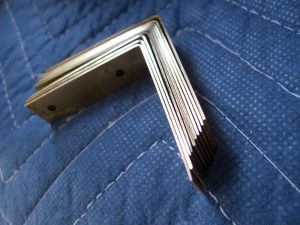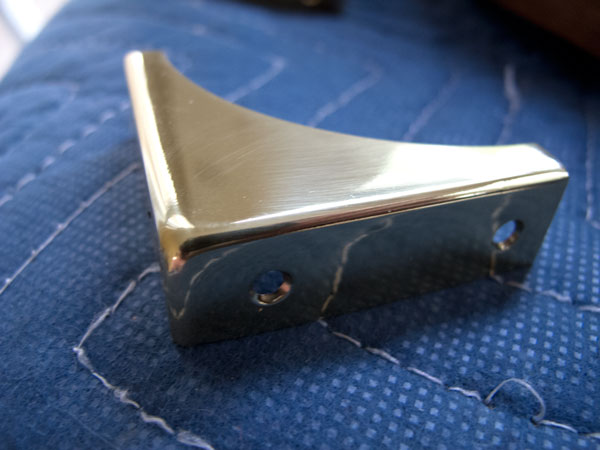We may receive a commission when you use our affiliate links. However, this does not impact our recommendations.
With campaign-style hardware, there are many choices out there for different budgets and aesthetics. You can go for full-on rustic, sand-cast hardware – this looks great but can be tricky to install because every piece of hardware is slightly different. Or you can opt for modern die-cast hardware – easy to install but a little too-consistent looking to look historically accurate.
I have installed both kinds of hardware, and I generally prefer the rustic sand-cast stuff, even though it doubles the time it takes me to install each piece.
So this week I was a bit wary when I ordered some hardware from Lee Valley for an officer’s trunk I’m building. The straps and corner guards I ordered were “pressed brass,” which is quite thin – only .035” thick.
However, this British-made hardware looks surprisingly nice in person, is precisely made and is easy to install – thanks to the consistent manufacturing tolerances. I’m combining these straps and corner guards with some 60-year-old sand-cast brass pulls, and the pressed brass pieces fit right in.
So consider these Lee Valley pieces if you are looking for stuff that is easy to install and looks consistent with the old stuff.
The pressed chest straps are here.
The corner guards are here.
Note: I paid full retail for these pieces of hardware. I was not asked to do this review. And etc.
— Christopher Schwarz
Here are some supplies and tools we find essential in our everyday work around the shop. We may receive a commission from sales referred by our links; however, we have carefully selected these products for their usefulness and quality.











Chris, I was fascinated by your magazine artical on the campaign secretary. So much so that I have purchased your book also. I am finding that the constraints of the article space limited the information you were able to impart and that the book is filling in the gaps so that I can move on to building my own secretary. In the article, you state that the brasses should be purchased first so that the boards can be properly sized to accept them. With the option to use the Veritas brasses, am I safe in assuming that uniformity has been achieved and I can buy the brasses later in the project?
I was especially gratified to learn that Camphor was one wood of choice for the construction. I have a quantity and will use it to make my secretary. When you built yours, you were able to use boards of sufficient width so that no panel glueups were required. I may, or may not, have sufficiently wide material to achieve that goal, but am hopeful that I’ll find enough as I dig through my stack (I’ve already used three trunk slabs to construct a headboard for our guest room.) You say in your book that you used pine for the backs of the chests. In the interest of squareness and rigidity, I’ve been thinking of using Baltic Birch plywood with a layer of Camphor glued on figuring I could resaw one of my lesser pieces and achieve a book match effect. I could also build a panel for a frame and panel back consisting of an internal plywood layer with Camphor glued on both sides which would make the pieces lighter, still using Camphor for the frames.